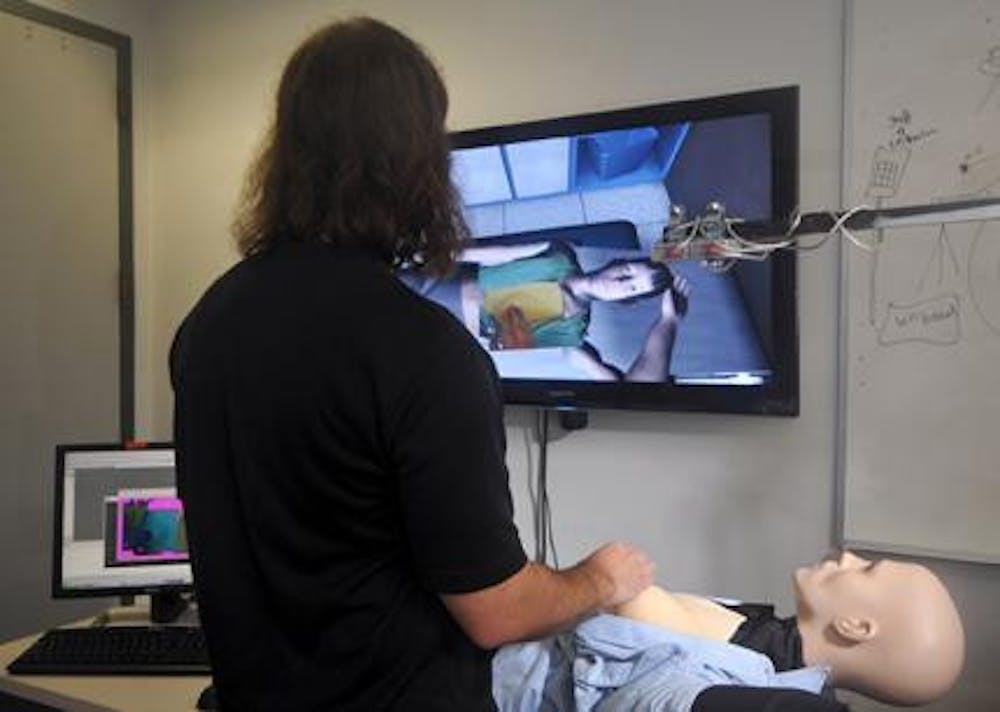More than 100 people have felt up Amanda Jones.
But Amanda is sacrificing her dignity for the good of medicine.
A cross between an avatar and a mannequin, Amanda prepares medical students for tough exams in the field.
Benjamin Lok, assistant professor of computer and information sciences and engineering at UF, said he has been working on the idea of a mixed-reality patient for about two years.
"Intimate exams can be uncomfortable for medical students to do at first," Lok said. "I figured if we could find new technology for them to use as practice, it would save time and money."
Jones' physical form, a mannequin with a prosthetic breast that students can perform physical exams on, is immobile. Her virtual form is a life-sized computer avatar that communicates via speech and gestures on a large flat-screen television mounted above her "body."
Lok said medical educators write the words Jones uses to converse back and forth with medical students. Each script focuses on a realistic situation that the doctors want the students to learn how to handle properly.
"A doctor's response to certain situations is vital to patients," Lok said. "How can you give students a chance to gain experience without giving them plenty of opportunities to practice?"
Lok said that other medical colleges have expressed interest in learning more about the project, but that the idea for the virtual human first began at UF.
He has been working with Dr. D. Scott Lind from the University of Georgia and Dr. Carla Pugh, a breast cancer specialist at Northwestern University, to help make the idea of mixed-reality humans a possibility in the medical field.
Lok said that even though they are still in the research stage, the ultimate goal is to get these mixed-reality patients out to other medical schools.
Aaron Kotranza, a research assistant in the computer and information sciences and engineering program, built the simulator that gives Jones her voice.
"Some of the medical students feel weird talking to her, but others will try to comfort the patient by touching her," Kotranza said.
He said one of the main goals of the mixed-reality humans is to help improve the students' nonverbal behaviors and interpersonal skills.
"It's not just about asking the right questions - it's about how you make the patient feel," he said. "We want to prepare today's medical students to have excellent communication skills, as well as medical expertise."
While Amanda has not yet been tested at UF, between 100 and 120 medical students from the Medical College of Georgia have tested a duplicate of the technology, Kotranza said, and the response has been overwhelmingly positive.
UF medical sophomore Elise Springer said she is eager to use the technology.
"It's lifelike, taking the idea of practicing on a dummy and expanding on it," she said, "as well as the opportunity to fine-tune your physical exam."
"Students react to her in different ways, but they always learn something," Kotranza said.
"Before you fly an airplane, simulation plays a very strong role in preparation. It's the same with medicine. It's a safe place to fail."






